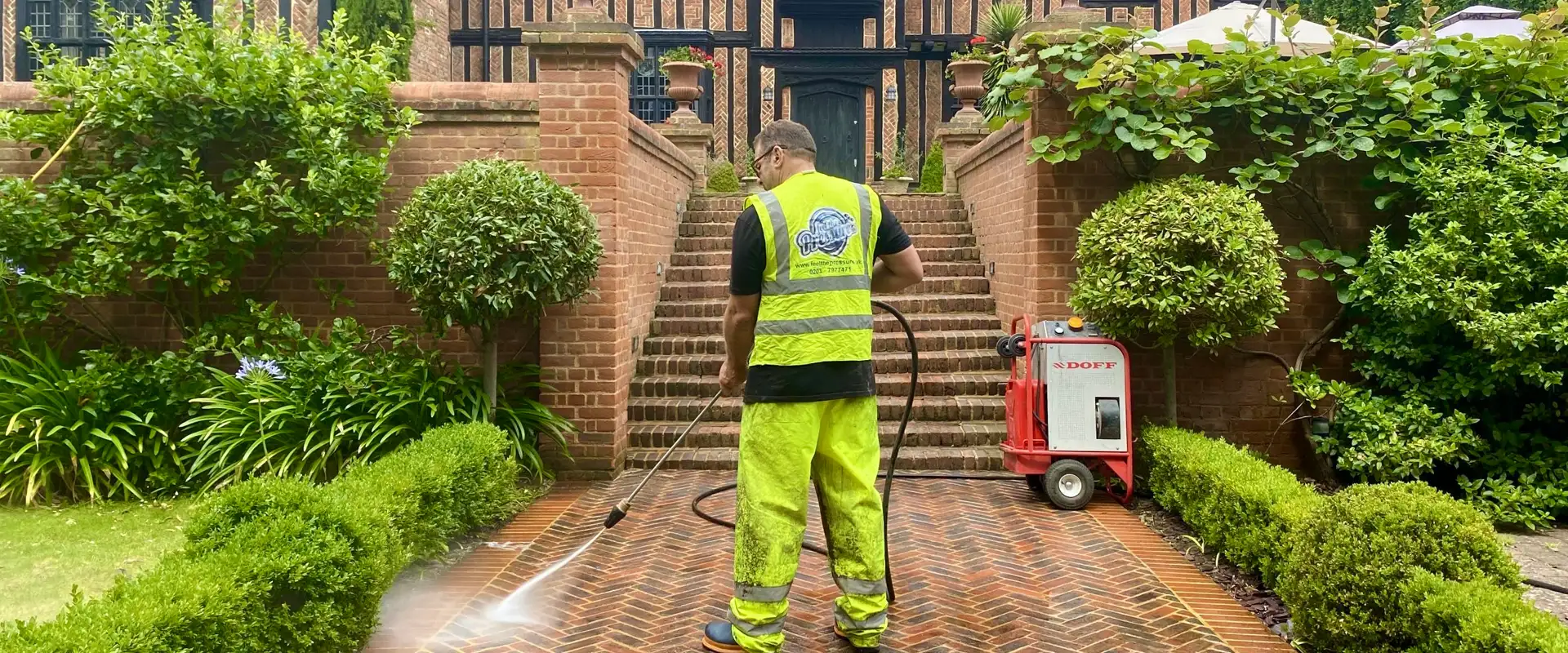HOW TO RE-SAND BLOCK PAVING AND ITS IMPORTANCE
Re-sand block paving.. Block paving is a popular choice for driveways, patios, and walkways due to its aesthetic appeal and durability. However, to maintain its appearance and functionality, routine maintenance is essential. Among these maintenance tasks, re-sanding the paving after cleaning is crucial. Here’s an in-depth look at why this step is so important.
The importance of re-sanding block paving after cleaning
Re-sand block paving.. Block paving is a popular choice for driveways, patios, and walkways due to its aesthetic appeal and durability. However, to maintain its appearance and functionality, routine maintenance is essential. Among these maintenance tasks, re-sanding the paving after cleaning is crucial. Here’s an in-depth look at why this step is so important.
Understanding block paving
Block paving involves placing individual blocks or bricks on to a bed of sand, which is then compacted. The sand joint locks the blocks in place and provides stability while allowing for drainage and slight movement due to temperature changes. Over time, environmental factors such as weather, traffic, and plant growth can degrade the sand, making regular cleaning and maintenance necessary.
How to re-sand block paving
When booking with Feel the pressure UK to professionally clean your block paved areas we will always recommend to have the surface professionally re-sanded by our team upon completion. Our highly experienced team can always guarantee a spotless finish and full colour restoration for all types of block paving areas including patios, driveways and paths.
We can also guarantee when re-sanding your block paving areas it will be done to the very highest of professional standards. If you’re looking to re-sand block paving by yourself we have to step by step guide for you to for you to follow below to ensure you get the job done as good as the professionals.
Re-sanding block paving step by step guide
- Make sure the surface is dry: The very first thing to be sure of when you re-sand block paving is that the surface 100% dry before you start. If the surface is wet or slightly damp the sand will clog together and wont pack between the joints as it’s supposed to. When re-sanding block paving if not done correctly it can cause a number of unwanted issues including, dips in the surface caused by to much movement in the paving as well as unsightly weeds to grow in-between the gaps.
- Choose the Right Sand: To re-sand block paving our team at Feel the pressure UK and all other professionals will always use and recommend kiln-dried sand for the best results. This type of sand is fine, dry, and easy to work into the joints. Take our word for it kiln-dry sand is the only sand you wont to use when sanding block paving.
- Apply Sand Evenly: Spread the sand across the surface and use a broom to work it into the joints. Ensure all gaps are completely filled. To re-sand block paving our team recommend using a synthetic broom with a medium stiffness when re-sanding block paving. Using the correct broom will save you a lot of time and energy.
- Compact the Sand: Use a compactor to settle the sand and add more as needed. Compaction ensures the sand is packed tightly, reinforcing the block’s stability.
- Apply a Sealant (Optional): For additional protection, consider applying a suitable sealant over the sanded paving. This can help bind the sand in place and protect the surface from stains and wear.
Why is it so important to re-sand block paving
1. Stabilising the Paving
After cleaning, especially pressure washing, the majority of sand between the blocks will get removed. Re-sanding fills these gaps, which helps to stabilise the blocks. Without adequate sand, the blocks can shift, sink, or tip, leading to an uneven surface that can be a tripping hazard as well as unsightly.
2. Re-sanding block paving enhances structural Integrity
The sand in the joints acts like a cushion that supports the weight of vehicles or pedestrian traffic. By filling in gaps with sand post-cleaning, you ensure the load is evenly distributed across the paving. This prevents individual blocks from cracking or breaking under pressure.
3. Re-sanding block paving prevents Weed Growth
One of the primary functions of re-sanding block paving is to act as a barrier against weed growth. When the sand is washed away, weeds, grass, and moss can take root in the gaps. Re-sanding block paving after cleaning fills these spaces and reduces the likelihood of unwanted plant growth, maintaining the clean, tidy appearance of your paved area.
4. Re-sanding block paving enhances aesthetic appeal
A well-re-sanded block paving doesn’t only offer functional benefits but also significantly enhances the visual appeal of your driveway or patio. Fresh sand can refresh the look of the paving, making it appear newly installed, which adds to your property’s overall curb appeal.
5. Promoting Better Drainage
Correctly filled joints promote effective drainage by directing water to the appropriate channels, such as runoff areas or drainage systems. This is vital to prevent water pooling, which can lead to erosion under the paving or in the surrounding soil, eventually causing structural issues.
Conclusion on re-sanding block pavers
Re-sanding block paving after cleaning is an essential maintenance practice that protects your investment. It ensures safety, enhances visual appeal, prevents weed growth, and maintains structural integrity. By incorporating this simple task into your maintenance routine, you can significantly extend the life and beauty of your block paving, keeping it looking its best for years to come.
For more information on how to re-sand block paving or if you would like one of our team to professionally Re-sand or clean your patio or driveway please feel free to contact us at any time. We offer the very best in all types of professional exterior cleaning and restoration services at the most competitive prices available.

